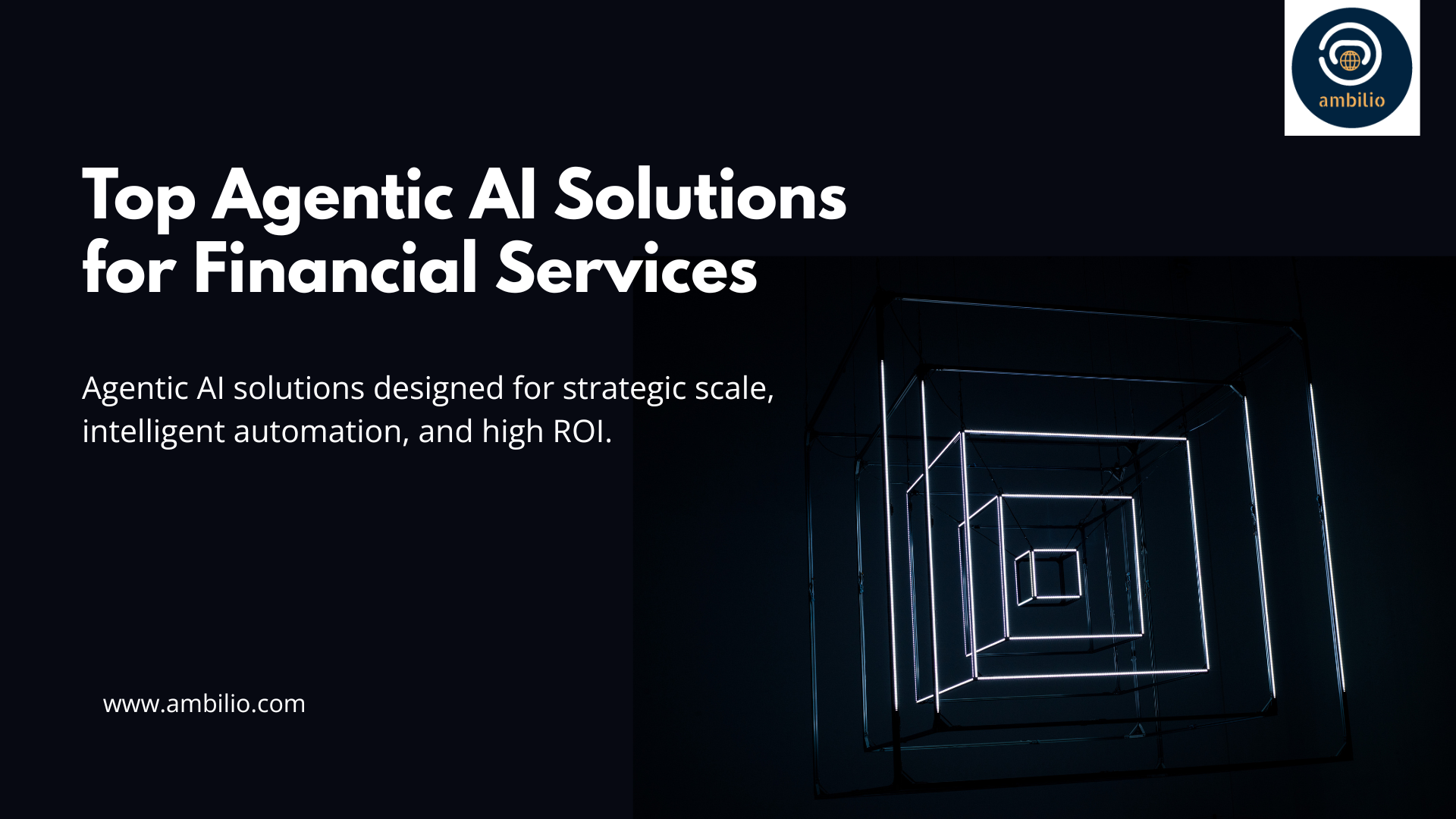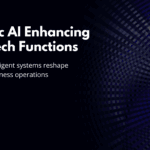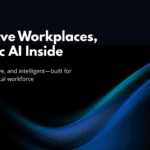The financial services industry is rapidly advancing through digital transformation, creating a pressing need for intelligent systems that go beyond traditional automation. While conventional AI has improved efficiency and decision-making, it remains limited by static, narrowly defined tasks. Agentic AI introduces a shift—empowering systems to perceive, reason, and act autonomously across complex, multi-step processes. This paradigm presents significant value for financial institutions aiming to modernize operations, mitigate risk, elevate customer experience, and achieve scalable growth. Presented here are ten high-impact Agentic AI Solutions for Financial Services, each addressing key functions like underwriting, compliance, fraud prevention, and advisory—offering clear motivation, strategic features, and practical steps for R&D investment and implementation.
Agentic AI Solutions for Financial Services
1. Autonomous Underwriting Engine
Traditional underwriting is slow, manually intensive, and often inconsistent. Financial institutions, especially in lending and insurance, need a solution that can assess risk and eligibility across vast amounts of structured and unstructured data in real-time. An autonomous underwriting engine built on agentic AI principles does just that.
What It Is:
This solution involves a system of interacting agents—one focused on data ingestion (e.g., credit reports, income statements), another on document verification, a third on risk scoring, and others managing rules, exceptions, and final decision-making. These agents collaboratively simulate the human decision-making chain but with far greater scale and speed.
Key Features:
- Real-time document processing
- Contextual risk assessment using LLM-based reasoning
- Continuous learning from approval/rejection outcomes
- Transparent audit trails for regulatory compliance
- Adaptive rule engine for policy updates
5 Steps to Build:
- Define underwriting logic and business rules across products.
- Develop micro-agents for each task: data parsing, scoring, rule-checking.
- Integrate NLP/LLM components for interpreting documents.
- Design a central agent orchestrator to manage workflows.
- Validate outcomes against human decisions and retrain models.
2. Agentic Wealth Advisory Companion
High-net-worth individuals expect intelligent, personalized financial guidance, but scaling such services is resource-heavy. This solution offers a dynamic AI-driven advisory system that operates autonomously and contextually.
What It Is:
A collective of agents acts as a virtual wealth advisor—some track market conditions, others analyze client behavior and life events, and another set generates updated portfolio recommendations based on real-time data. The system can simulate market scenarios, adjust investment allocations, and even respond to client queries conversationally.
Key Features:
- Personalized investment strategies based on risk tolerance
- Dynamic rebalancing based on market trends and client changes
- Real-time financial goal monitoring
- Multi-modal user interface (voice, text, dashboards)
- Compliance-embedded recommendations
5 Steps to Build:
- Segment client personas and define advisory logic.
- Build agents to track market, behavior, and life events.
- Integrate planning tools and goal simulation models.
- Train an LLM interface for interaction and explanation.
- Pilot with real clients and calibrate recommendations.
3. Real-Time Fraud Response Framework
Fraud detection has evolved, but response systems remain reactive and disjointed. Financial firms need an agile, intelligent framework that doesn’t just detect but also mitigates fraud in real time.
What It Is:
A layered agentic system where detection agents identify anomalies, verification agents validate them, a reasoning agent determines the severity, and resolution agents either notify users, freeze accounts, or escalate to human teams—based on predefined logic.
Key Features:
- Autonomous decision-making with low false positives
- Live transaction stream monitoring
- Contextual severity evaluation using LLMs
- Secure user interaction for alert resolution
- Continuous learning from fraud cases
5 Steps to Build:
- Train anomaly detection models on historical fraud data.
- Build response agents with action playbooks.
- Design user-verification interfaces (SMS, app-based, email).
- Implement explainable AI components for auditability.
- Test under live conditions with controlled release.
4. Agentic KYC & AML Operations Hub
Compliance is costly and resource-intensive. Know Your Customer (KYC) and Anti-Money Laundering (AML) regulations require timely, accurate checks across global databases. An agentic operations hub transforms this process into an autonomous compliance machine.
What It Is:
A federation of agents handles onboarding document verification, sanctions screening, risk flagging, suspicious activity reporting, and compliance log generation—executing these seamlessly across jurisdictions.
Key Features:
- Multi-source identity validation
- Real-time regulatory updates integration
- Cross-checks with sanction and PEP lists
- Intelligent suspicion detection
- End-to-end audit logs
5 Steps to Build:
- Define regional compliance requirements and exceptions.
- Create agents for identity parsing, verification, and sanctions screening.
- Train suspicious activity detection agents on AML datasets.
- Integrate with compliance databases and reporting tools.
- Run sandbox testing under synthetic profiles.
5. Autonomous Treasury Manager
Large firms manage multiple accounts, currencies, and cash flows. Manual treasury operations lead to inefficiencies and suboptimal returns. An autonomous treasury system can solve this through continuous monitoring and planning.
What It Is:
Agents dynamically manage liquidity, recommend fund reallocations, initiate currency hedges, and suggest investments—all based on live market and operational data.
Key Features:
- Cash forecasting and optimization
- Currency fluctuation mitigation
- Automated investment of idle funds
- Smart alerts for treasury risks
- Seamless ERP integration
5 Steps to Build:
- Map treasury functions and triggers.
- Train forecasting agents using cash flow and transaction data.
- Implement rules-based and ML-driven planning agents.
- Integrate with FX and investment platforms.
- Create a control dashboard for real-time visibility.
6. Loan Restructuring & Recovery Agent System
Handling defaults is slow, legally complex, and emotionally difficult. This solution automates the first line of loan restructuring and recovery decision-making.
What It Is:
Agents assess borrower financials, regulatory allowances, portfolio constraints, and propose restructuring terms or recovery options like settlements and legal paths.
Key Features:
- Borrower risk re-assessment
- Policy-aware negotiation logic
- Scenario-based restructuring proposals
- Automated communication and document handling
- Escalation routing to legal teams
5 Steps to Build:
- Gather historical default and recovery data.
- Build borrower profiling and financial health agents.
- Train negotiation logic agents on legal rules.
- Automate documentation and consent processes.
- Pilot with non-critical loan segments.
7. Smart Insurance Claim Agents
Insurance firms face claims overload with high operational costs and customer dissatisfaction. A smart agentic system can fast-track this.
What It Is:
Agents parse submitted documents, analyze claim videos/images, verify policy coverage, and process approvals or rejections autonomously—while keeping the customer in the loop.
Key Features:
- NLP and image understanding
- Real-time policy cross-verification
- Fraud flagging modules
- Chat interface for claimant updates
- Third-party integration (hospitals, garages)
5 Steps to Build:
- Annotate historical claims data for training.
- Build document/image processing agents.
- Define rules for fast-track vs. complex claims.
- Connect with external data providers for verification.
- Deploy in a narrow segment before general rollout.
8. Agentic ESG Risk Evaluator
As financial institutions face pressure to meet ESG goals, they need tools that can assess and score ESG risks in real time.
What It Is:
Agents gather data from filings, media, NGO reports, and databases, then classify and score risks across ESG dimensions—feeding these into lending or investment models.
Key Features:
- ESG taxonomy-aware data extraction
- Contextual scoring based on sector benchmarks
- Alert generation for ESG violations
- Integration with credit models
- Reporting for regulatory bodies
5 Steps to Build:
- Define ESG frameworks for your industry.
- Collect diverse ESG data sources.
- Train classification and scoring agents.
- Link outputs to risk and investment systems.
- Validate with historical ESG incidents.
9. Behavior Simulation Lab for Financial Decisions
Understanding how customers behave under economic scenarios is a strategic edge. Simulation agents offer a controlled, predictive lab environment.
What It Is:
Synthetic agents simulate real customer segments—how they would react to changes in interest rates, product terms, or economic stress.
Key Features:
- Synthetic persona generation
- Macro/microeconomic event modeling
- Behavioral response logic
- Real-time scenario editing
- Visual analytics and insights
5 Steps to Build:
- Create customer personas from segmentation data.
- Define economic/environmental variables.
- Train response models using historical behaviors.
- Build interaction loops for simulation.
- Integrate into product and strategy teams’ toolkits.
10. Autonomous Financial Document Analyst
Financial analysts spend hours summarizing filings, reports, and presentations. This solution automates their reading, synthesis, and insight generation.
What It Is:
Agents read, extract, and summarize key financial points from annual reports, earnings calls, and disclosures. Others highlight risks, compare year-over-year data, and answer natural language queries.
Key Features:
- Multilingual parsing and summarization
- Risk and anomaly detection
- Comparative benchmarking
- Analyst-style natural language Q&A
- Plug-in for investment platforms
5 Steps to Build:
- Annotate financial documents with expert summaries.
- Train extractive and abstractive summarization agents.
- Implement benchmarking logic and anomaly detection.
- Create a secure query interface.
- Deploy to research and analyst teams.
Conclusion
The potential of Agentic AI Solutions for Financial Services goes far beyond automation—it lies in building autonomous, reasoning systems that can perform critical business functions with minimal human intervention. From underwriting to advisory, fraud management to ESG compliance, these solutions offer not just efficiency, but strategic leverage. Financial institutions investing in R&D for agentic AI are likely to gain long-term advantages in agility, scale, and insight generation. As the industry shifts toward more intelligent systems, the value of Agentic AI Solutions for Financial Services will only become more apparent. Now is the time to move from experimentation to serious development.



